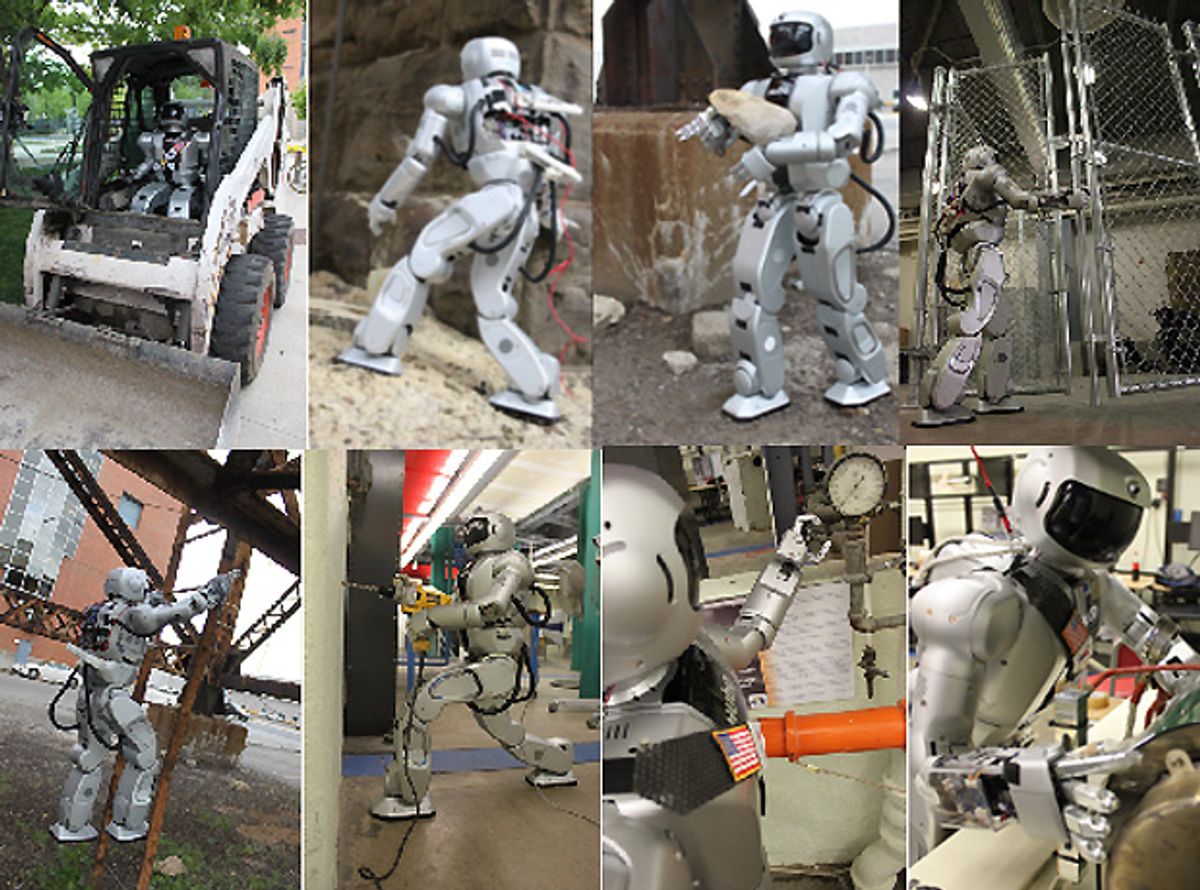Later this year, some of the world's most advanced humanoid robots—and their human masters—will gather for the DARPA Robotics Challenge (DRC), a competition where the robots will attempt to perform a series of complex tasks in a disaster response scenario. The highly anticipated event is still eight months away, but teams will also have to show that their robots can perform adequately in a computer simulation, which is coming up soon, in June. Teams are working frantically on their robots and simulations, and while some groups operate in total secrecy, others like Team DRC-Hubo are eager to show off their progress.
The DRC will consist of eight tasks, including some that are highly complex, such as driving a vehicle or climbing a ladder. Any one of these activities would be difficult to prepare for individually, let alone altogether. Which means that, if the robots prove successful at even some of the tasks, the DRC will be considered a major milestone for robotics. It will also serve to showcase the practicality of the humanoid form-factor, which some have dismissed as expensive research projects unfit for real-world use.
Team DRC-Hubo is a consortium of several universities, including Drexel University and KAIST's HuboLab (and its spin-off RAINBOW Co., which markets its robot technology). Early this year, the team had released a rather nifty computer animation starring Hubo as a disaster response robot in the year 2020. This week the HuboLab researchers have published the first videos showing their robot engaging in DRC-related activities.
In the first video we can see a heavily modified version of KAIST's Hubo 2 robot midway up a ladder. The robot's arms have been elongated to better meet the challenge requirements. And, it would appear, the team plans to have their robot climb the ladder backwards (because, you know, that's not much of a problem when you are a robot).
Next, we see that those funky-looking arms are compliant, and how that will help it while driving the utility vehicle. The DRC begins with the robots getting into a Polaris Ranger EV and driving it to a destination while avoiding obstacles. If it's a bumpy ride and the robot is jostled about, the natural give in its arm joints will help to keep its hands firmly affixed to the wheel without the risk of breaking the arm into pieces.
Clearly, there's still much more left to do. The Ranger doesn't have any doors, which should make it easier for the robots to get into the driver's seat, but it could be a bit of a tight squeeze—actually getting in and out will prove to be difficult in its own right.
As enticing as these videos are, they are only the tip of the iceberg, which makes one wonder if the teams will really be ready come December? Consider for example the PR events put on by Japanese automakers, where advanced robots like Honda's Asimo or Toyota's HSR promote their brand and technological prowess. Every action is carefully choreographed in advance, and unseen operators pull the strings behind the curtain, yet things still can (and do) go wrong.
Now imagine all the myriad problems that may arise over the course of the DRC, which will be far more complex and demanding than a pristine showroom stage. And there's only eight months left before showtime! Can it get any more exciting?
[ Team DRC-Hubo via YouTube ]



